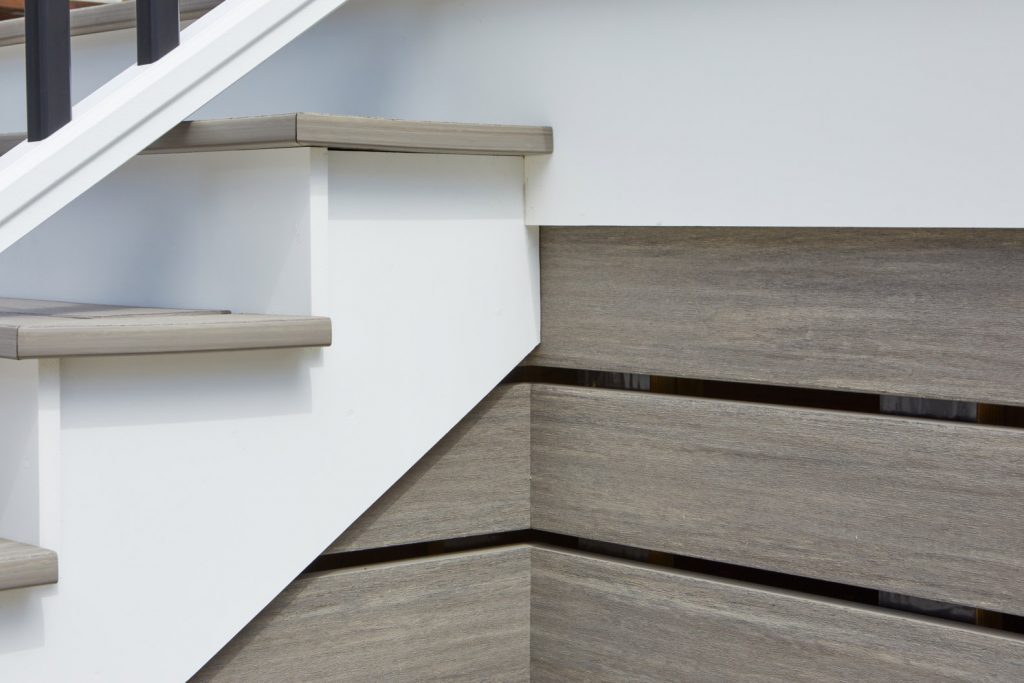The amount of space to leave between deck boards primarily depends on the type of wood or material you’re using for the decking. Generally, the guidelines are as follows:
Pressure-Treated Wood
For pressure-treated wood, a common spacing is 1/8 to 1/4 inch. This type of wood can shrink as it dries, so the spacing allows for some contraction without leaving too wide a gap.
Often pressure treated deck boards arrive soaking wet so many contractors will install them tight as they will shrink significantly once the deck boards start drying out.
Composite Decking
For composite materials, follow the manufacturer’s recommendations, but generally, 1/4 to 3/8 inch is advisable. Composite decking doesn’t shrink or expand as much as natural wood, but it does need room for some movement due to temperature changes. Composite and PVC decking have a tendency to expand and contract more on the length of the deck board opposed to the width.
Hardwood Decking
With hardwoods like Ipe or Cumaru, spacing can be smaller, about 1/16 to 1/8 inch, since these materials are more stable and less prone to shrinking and swelling.

When installing Ipe decking, be sure to leave a gap between deck boards of 3/32″. The difference in gap spacing is to ensure that the decking has room to expand and contract depending on the material used and the environment where it is installed.
This also allows for proper air circulation. Average shrinkage is approximately 1/8″ on 4″ wide boards and 1/4″ on 6″ wide boards. Shrinkage may vary depending on climate, installation site, and method of use.
Always let your hardwood decking acclimate 7-14 days where it will be installed uncovered so that the wood can breathe. This will help the wood adjust to your climate and reduce excessive shrinkage or expansion. Do not store wood decking in a garage and then install it as a garage is a different climate than where your decking will be installed.
Hidden Fasteners
Using hidden deck fasteners like the Ipe Clip hidden deck fasteners help space your deck boards properly, leave the surface of your deck boards blemish free with no screw holes, allow for expansion and contraction and speed up installation time.

Environmental Considerations: If you live in a particularly wet or humid climate, or if the deck is in a shaded area, you might consider slightly wider spacing to allow for faster drying and reduced risk of rot.
You want to make sure your deck gets plenty of ventilation in between the deck boards and underneath the deck. Make sure if you are installing skirting around the perimeter of the deck there are larger gaps in between your skirting material to allow for air flow underneath your deck.

Remember, always check with the specific decking material’s guidelines, as manufacturers might have specific requirements for their products. Additionally, taking into account the local climate and exposure to elements is important for the longevity and safety of the deck.
